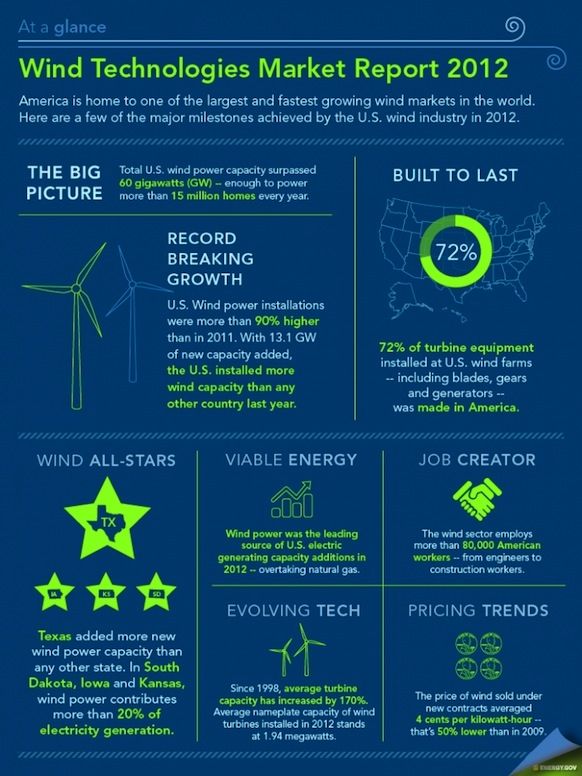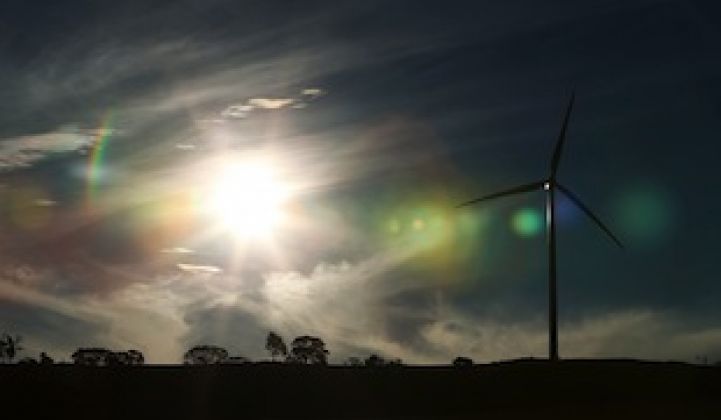Wind energy became the largest source of new U.S. electricity generation capacity in the U.S. last year, accounting for well over a third of capacity additions, according to reports released today by the Department of Energy.
“Wind energy is now the fastest-growing source of power in the United States -- representing 43 percent of all new U.S. electric generation capacity in 2012 and $25 billion in new investment,” said DOE in a statement. Wind power delivered electricity at an average of 4 cents per kilowatt hour in 2011 and 2012, “making wind competitive with a range of wholesale electricity prices seen in 2012,″ the Department said.
The 2012 Wind Technologies Market Report, released by DOE and Lawrence Berkeley National Laboratory, showed that more than 13 gigawatts of new wind power capacity were added in the U.S. last year, more than twice the previous year’s levels. This drove wind capacity to more than 60 gigawatts by year-end. Wind now accounts for more than 20 percent of electricity consumption in Iowa, South Dakota and Kansas, and more than 12 percent of consumption in six additional states.
In terms of capacity additions, “Texas remains a clear leader with over 12 gigawatts installed at the end of 2012 -- more than twice as much as California, the next-highest state,” said DOE.
The report also showed dramatic growth in U.S. manufacturing of wind turbine components, such as towers and blades. Almost two-thirds of wind turbine equipment installed in 2012 was U.S.-made, up from 25 percent in 2006-2007. And capacity of individual wind turbines has risen by 170 percent since 1998.
Distributed Wind
The DOE released an additional report in conjunction with the Pacific Northwest National Laboratory -- the 2012 Market Report on Wind Technologies in Distributed Applications -- which showed that cumulative installed distributed wind capacity in the U.S. reached more than 812 megawatts between 2002 and 2012 over more than 69,000 units across the country. Distributed wind capacity grew by 175 megawatts in 2011, with utility-scale installations comprising more than 80 percent of additions. “At the state level, Iowa, Massachusetts, California and Wisconsin led the nation in new distributed wind power capacity in 2012,” the statement said.
But the distributed wind report report forecasts a slowdown in capacity additions this year, “due in part to continued policy uncertainty and project development timelines.” Next year should see a pick-up in activity as developers bring projects that began construction this year on-line, but “projections for 2015 and beyond are much less certain.”
The International Energy Agency has questioned the efficacy of U.S. renewables policy, stressing that the lack of a stable, long-term incentive system has led to boom and bust cycles in the wind industry that ultimately stunt its growth.
You can find both reports, as well as various infographics and other resources on wind power in the U.S., here.

***
Editor's note: This article is reposted in its original form from Breaking Energy. Author credit goes to Conway Irwin.



